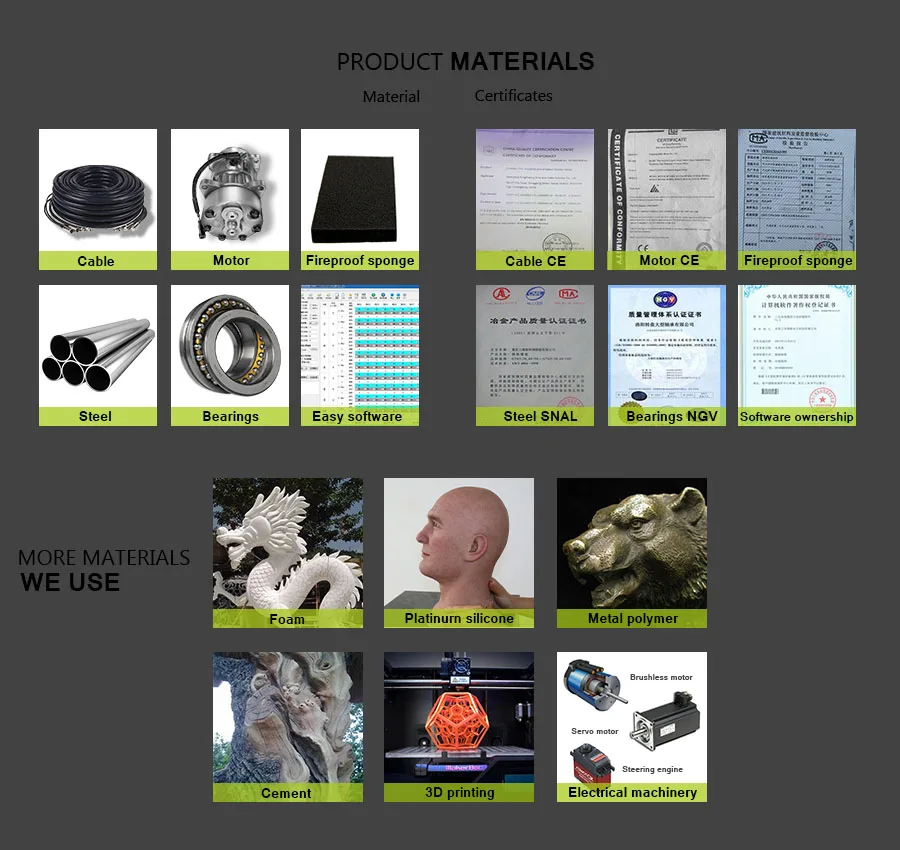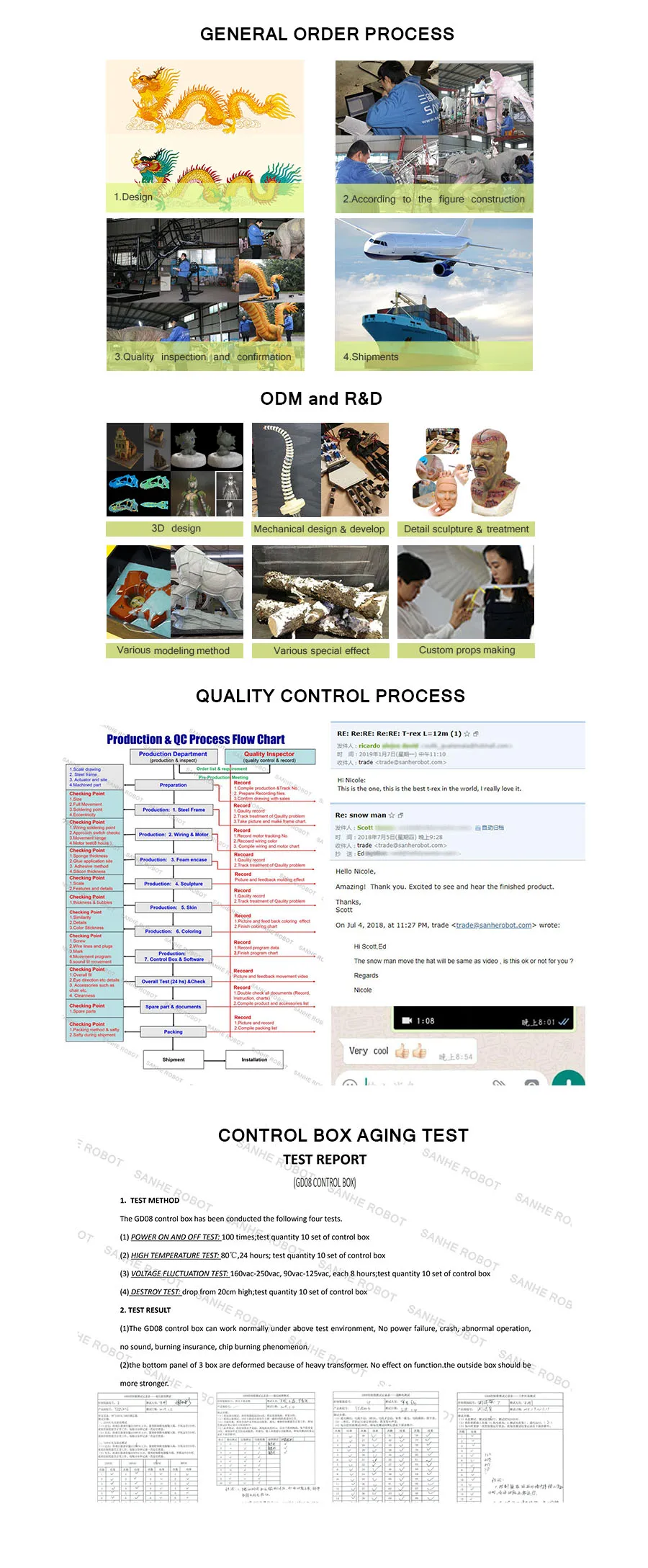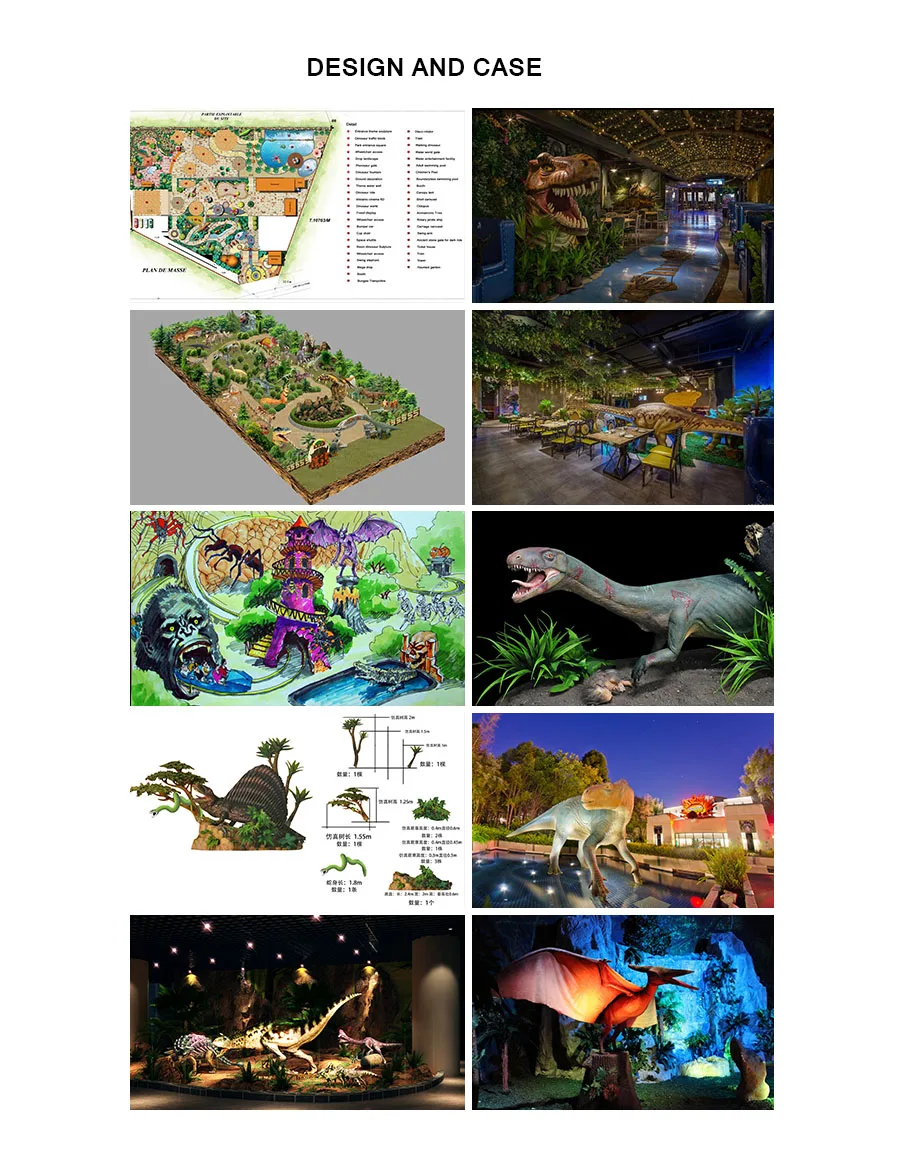Animatronic Prehistoric animals in theme parks
simulation animal
MORE INFORMATION
| Input | AC 110/220V ,50-60HZ |
| Plug | Euro plug / British Standard / SAA / C-UL / or depends on request |
| Control mode | Automatic / Infrared / remote / coin / Button / Voice / Touch / Temperature / shooting etc. |
| Waterproofing grade | IP66 |
| Working condition | Sunshine, rain, seaside, 0~50℃(32℉~82℉) |
| Optional function | Sound can be increased to 128 kinds Smoke,/ water. / bleed / smell / change color / change lights / LED screen etc interactive(Location tracking) / conversine(currently only Chinese) |
AFTER-SALE SERVICE
| Service | Need be cut for shipping,fwill provide a detailed installation manual. |
| Warranty | We provide 2 years warranty for all of our antrimatronic models, the warranty pieriod starts from freight arrives at destination port. Our warranty covers motor, reducer, control box, etc. |






 animated animatronic animal life-size animtronic animal model theme park
animals model types of animal model models of animals animals for home resin animal statue large outdoor animal statue large garden animal statue indoor animal statue jungle animal statue realistic animal statue full size animal statue big animal statue life size animal statue simulation animal animal model for sale artificial animal animal replica
Ground sloths are a diverse group of extinct sloths, in the mammalian superorder Xenarthra. The term is used as a reference for all extinct sloths because of the large size of the earliest forms discovered, as opposed to existing tree sloths. The Caribbean ground sloths, the most recent survivors, lived in the Antilles, possibly until 1550 BCE. However, radiocarbon dating suggests an age of between 2819 and 2660 BCE for the last occurrence of Megalocnus in Cuba.Ground sloths had been extinct on the mainland of North and South America for 10,000 years or more. They survived 5,000–6,000 years longer in the Caribbean than on the American mainland, which correlates with the later colonization of this area by humans.
Much ground sloth evolution took place during the late Paleogene and Neogene of South America, while the continent was isolated. At their earliest appearance in the fossil record, the ground sloths were already distinct at the family level. The presence of intervening islands between the American continents in the Miocene allowed a dispersal of forms into North America. A number of mid- to small-sized forms are believed to have previously dispersed to the Antilles. They were hardy as evidenced by their diverse numbers and dispersals into remote areas given the finding of their remains in Patagonia (Cueva del Milodón Natural Monument) and parts of Alaska.
Sloths, and xenarthrans as a whole, represent one of the more successful South American groups during the Great American Interchange. During the interchange, many more taxa moved from North America into South America than in the other direction. At least five genera of ground sloths have been identified in North American fossils; these are examples of successful immigration to the north.
animated animatronic animal life-size animtronic animal model theme park
animals model types of animal model models of animals animals for home resin animal statue large outdoor animal statue large garden animal statue indoor animal statue jungle animal statue realistic animal statue full size animal statue big animal statue life size animal statue simulation animal animal model for sale artificial animal animal replica
Ground sloths are a diverse group of extinct sloths, in the mammalian superorder Xenarthra. The term is used as a reference for all extinct sloths because of the large size of the earliest forms discovered, as opposed to existing tree sloths. The Caribbean ground sloths, the most recent survivors, lived in the Antilles, possibly until 1550 BCE. However, radiocarbon dating suggests an age of between 2819 and 2660 BCE for the last occurrence of Megalocnus in Cuba.Ground sloths had been extinct on the mainland of North and South America for 10,000 years or more. They survived 5,000–6,000 years longer in the Caribbean than on the American mainland, which correlates with the later colonization of this area by humans.
Much ground sloth evolution took place during the late Paleogene and Neogene of South America, while the continent was isolated. At their earliest appearance in the fossil record, the ground sloths were already distinct at the family level. The presence of intervening islands between the American continents in the Miocene allowed a dispersal of forms into North America. A number of mid- to small-sized forms are believed to have previously dispersed to the Antilles. They were hardy as evidenced by their diverse numbers and dispersals into remote areas given the finding of their remains in Patagonia (Cueva del Milodón Natural Monument) and parts of Alaska.
Sloths, and xenarthrans as a whole, represent one of the more successful South American groups during the Great American Interchange. During the interchange, many more taxa moved from North America into South America than in the other direction. At least five genera of ground sloths have been identified in North American fossils; these are examples of successful immigration to the north.

+86-813-2104677

info@sanherobot.com

+86-13990010824

No.13 Huixin Road, Yantan Town, Yantan District, Zigong City, Sichuan Province, China